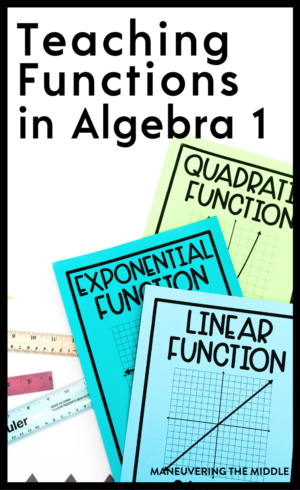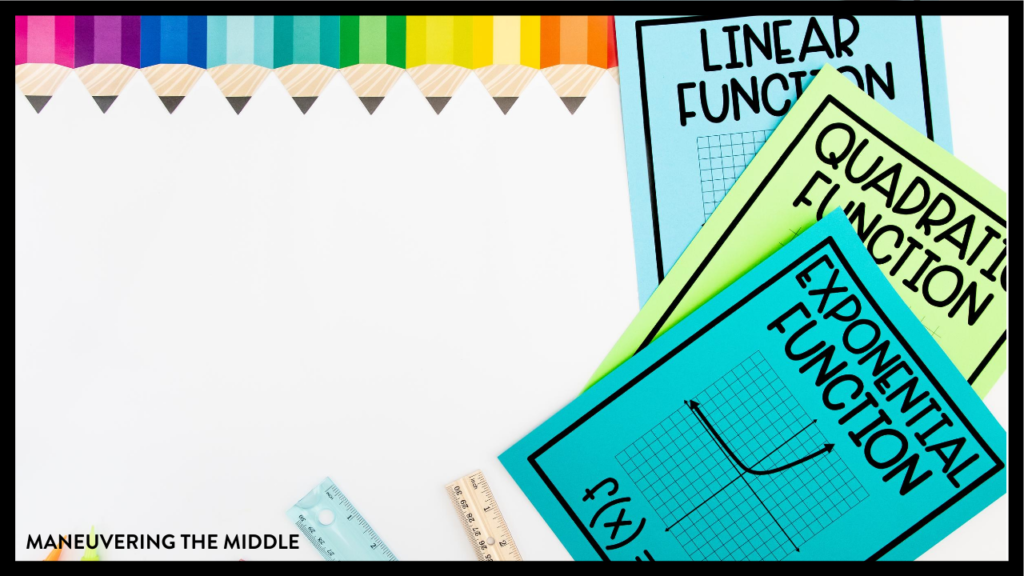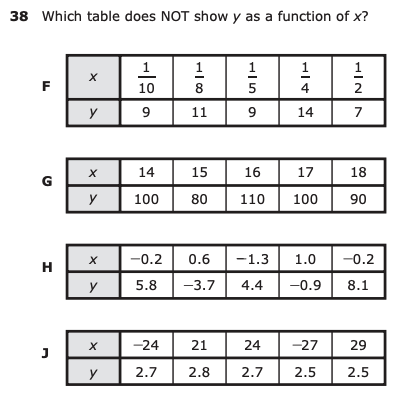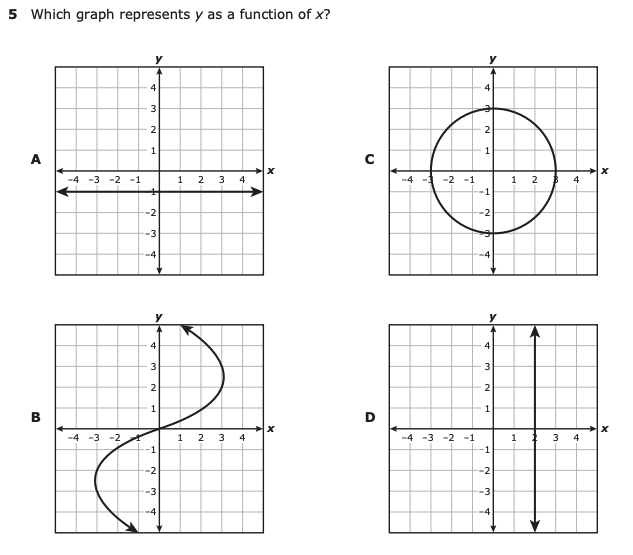

Not only are functions fun, they are the basis of all of Algebra 1 – linear, quadratic, and exponential. Out of 49 Texas standards in Algebra 1, 20 involve functions — that is over 40%! It is important that students have a firm grasp on understanding how to identify, evaluate, and graph a function to prepare them for more complex problems.

Here are the standards that best describe what we are going to focus our time on today.
Here’s what those standards look like as 2019 and 2018 STAAR test questions.


In 8th grade, students will begin to identify functions in ordered pairs and with graphs; it is a readiness standard, so it is tested more heavily in 8th grade than in Algebra 1. You can see an example of am 8th grade STAAR test question below.

I think vertical alignment is one of the things teachers can overlook the most when lesson planning. If you are unsure, look up what students have already been exposed to before introducing a topic. I like using this document here.

If you have taught how to identify a function before, you are probably familiar with the definition of a function —
“A function is a rule that assigns each input exactly one output. They occur when every x-value is associated with exactly one y-value.”
You are also probably very familiar with the vertical line test.
When I was a student, I learned to just use the vertical line test. If given a set of ordered pairs, I would quickly sketch it to see if it passed the vertical line test. I had NO understanding of why this worked and what made a function an actual function.

It wasn’t until I taught functions that I came across a concept that helped me understand the WHY behind the vertical line test. If you have a graph with time on the x axis and distance on the y axis, a vertical line would represent someone or something at a particular moment in time being in more than one place at once, which is not possible. A horizontal line would represent someone or something not moving over a period of time which is possible.
Here are other strategies to help students conceptually understand:
Once students have a firm grasp on functions and relations, evaluating and graphing functions come a little more naturally. Students have been substituting and graphing in all four quadrants since 6th grade. Spend time reviewing the order of operations and how to graph on a coordinate plane. Never assume students already know how to do that – you will be surprised by the misconceptions! However, function notation will be new to students. From my experience, students pick up that f(x) is the new y fairly well!
And because nothing makes math come to life more than our favorite web-based program, here are a few Desmos links.
Properties of functions – identifying, evaluating, and graphing are big skills that need their own day. Each of these skills requires a myriad of formats for students to comprehend — set of ordered pairs, mapping diagrams, a graph, a table, or a real life example. Students need exposure, so do not plan on flying through these standards in a few days. Since functions are foundational in Algebra, extra time spent setting the stage will not go to waste.